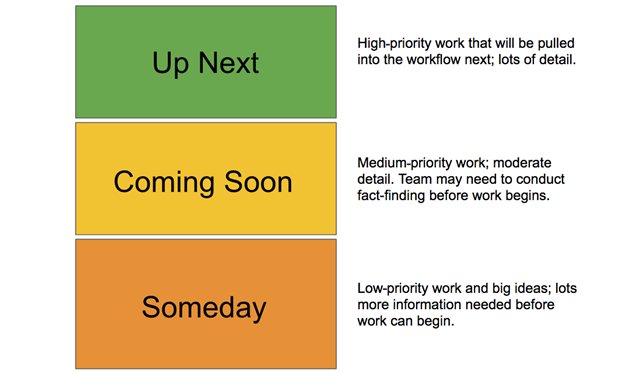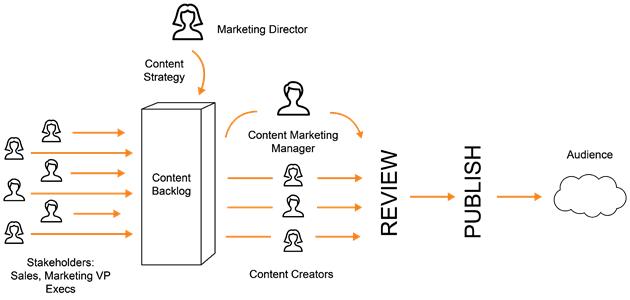It's called Agile, and it works beautifully in marketing. For my fellow content marketers, I want to share four Agile practices that can help insulate you from "Oh by the way" moments. It tells the content team what's most important at any given time, so when they're ready to start a new project they know it reflects the department's current priorities. 2: Workflow Visualization Once you've identified the most important work for your content team to tackle, you need to understand what happens during the process of content creation. What happens to it while it's being worked on in your team? They put strict limitations on how much work we can do at once, which produces two game-changing outcomes: Content creators stop starting on new pieces and actually finish what they're working on. WIP limits can be applied to each stage of a workflow, which works great for teams of two or more content creators. In those situations, your board might look something like this: Here, we can't take on any more design work because we're at our WIP limit. 4: Content Sprints Truth time: I'm kind of anti-Scrum and anti-sprint. Start with a nice backlog, then visualize your work, add some WIP limits, and finally experiment with sprints.


We content creators have a tough gig. We’re not just responsible for the fun kinds of content—the interesting case studies and the in-depth articles on fascinating topics.
We also have to deal with “Oh, by the way” requests from all over the organization. Our days become a parade of “minor” requests…
“Could you just jump in and film this customer testimonial? It really shouldn’t take that long.”
“I really need another email in this nurture campaign. Can you just throw one together for me?”
“I forgot about this important client call tomorrow. Would it be too hard for you to compile a case study real-quick?”
It can be tough to push back and remind our colleagues that we aren’t short-order content cooks who can whip up content at a moment’s notice. Fortunately, there’s a work-management process designed to protect the content creators of world.
It’s called Agile, and it works beautifully in marketing.
For my fellow content marketers, I want to share four Agile practices that can help insulate you from “Oh by the way” moments. Pick up just a few of these, and you’ll be able to produce more work in less time with far less stress.
Agile Practice No. 1: The Content Backlog
The simplest way to think about the backlog is as a prioritized to-do list. It tells the content team what’s most important at any given time, so when they’re ready to start a new project they know it reflects the department’s current priorities.
Though the content backlog is filled with content, not every item it holds will be prioritized equally and conceptualized to the same degree:

- Pieces at the bottom can be vague, because it may be weeks or months before the content team starts work on them.
A backlog allows you to capture ideas and prioritize them regularly without needing to spend hours hashing out logistics for pieces that won’t come up any time soon.
But just because a content item at the bottom of the backlog doesn’t require detail now doesn’t mean you can throw it in there and then forget about it.
Instead, marketing leadership needs to stay on top of the backlog, ensuring that it’s regularly refined and it reflects the team’s current priorities.
You’ll have the best luck keeping your backlog current if there’s a single person in charge of its state, such as a content strategist or director of content. Even if multiple stakeholders get input into what goes into the content backlog, there will ideally be one person who makes sure their ideas are specific, detailed, and important by the time they arrive at the top.
Agile Practice No. 2: Workflow Visualization
Once you’ve identified the most important work for your content team to tackle, you need to understand what happens during the process of content creation. For that, you need to visualize your workflow.
That may sound complicated, but it can start with a very simple sketch:

- Where does the work come from?
- What happens to it while it’s being worked on in your team?
- Where does it go when you’re done with it?
As you’re digging into those questions for the first time, make sure you have the content creators themselves in the room.
That’s…

COMMENTS